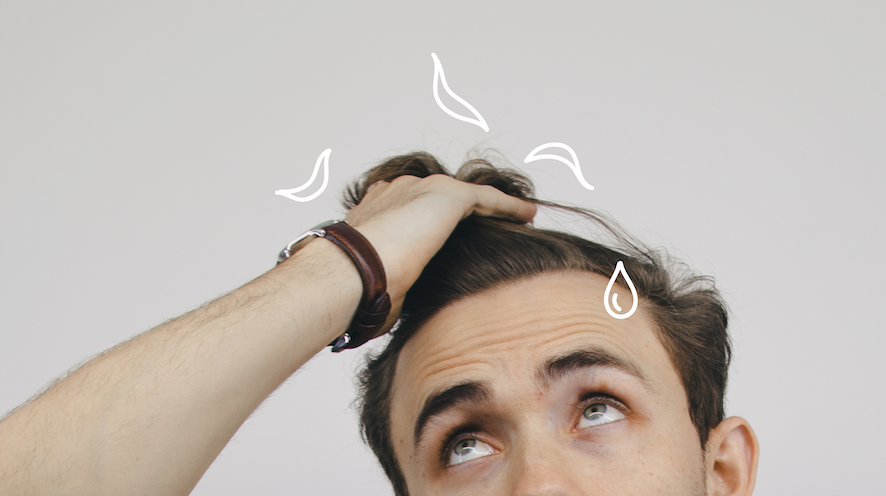Humans are one hairy species. We're just as hairy as primates such as chimps and bonobos. The only difference is that most of our bodies, unlike primates, are covered in a fine, colourless hair type known as peach fuzz or vellus hair. Only the eyebrows, armpits, groin and more importantly, the scalp have a thicker, more pigmented hair type known as terminal hair. On average, we have as many as 5 million hair follicles all over our body. So, you'd think that we'd know a lot more about these weird little keratin fibres sprouting out of us like microgreens, but we don't. Our lack of knowledge becomes all the more evident when we start losing our locks. Our first instinct is to go to our trusted and reliable source, Google. But when we get there, we're none the wiser. We quickly find that the interwebs are full of challenging and confusing terminology and academic research papers, of which most people can't make head nor tails. So here is the just of it…
Each hair grows out of a tiny cavity in our skin, called a hair follicle. Hair follicles are embedded in the second layer of our skin called the dermis and advance, into the outer layer known as the epidermis. The hair follicle is crucial because it's where hair growth begins and can end. It's pretty much an organ, with its immune system, growth cycle and is also androgen-dependent. Think about it like this, hair follicles are your foundation and your cladding, and without them, you can't build healthy hair (take this which a pinch of salt because construction's not our forte).
Androgens are those male hormones, responsible for your growth spurt, the time your voice became deeper and every so often, that inclination to trade in your family car for a Harley. The androgen we're going to focus on is testosterone, which you've likely heard about. Testosterone is the good guy in this story because it supports healthy hair growth. So, you're wondering, if testosterone is so great, how come we lose our hair?
Cue the bad influence, 5-alpha reductase! You know, the guy who rocks up to work late, tells the most over-the-top stories and casually nods at you as he asks you to cover him, while he disappears for his tenth smoke break of the day. 5-alpha reductase is an enzyme which turns testosterone into what's known as dihydrotestosterone. Or just DHT if you're a serial abbreviator.
When 5-alpha reductase turns testosterone to DHT, DHT becomes testosterones evil alter-ego and, instead of growing the hair follicles, it attacks them.
Remember, when we mentioned that our hair follicles have their own growth cycle? That cycle is known as telogen, anagen and catagen. Anagen is a growing phase; catagen is the resting phase, and telogen, the shedding phase.
What DHT does, is that it cuts the anagen growing phase of your hair follicles shorter and shorter. This mechanism is known as hair follicle miniaturization. DHT shrinks and miniaturizes your follicles - making it, so that thick, healthy hair struggles to grow. At the same time, DHT pushes more hairs into telogen, the shedding phase. When fewer hairs are in anagen and more in telogen, it means more hair fibres are falling out than usual. So, in addition to thinner hair, you may notice increased shedding.
So, how do you stop or prevent hair loss? The aim is to start young or as soon as you notice a change, especially if you know for sure that male pattern hair loss runs in the family - because hair loss is hereditary. It was initially believed that the hair loss gene was dominant on the mom's side, the X-chromosome. But scientists are finding more evidence to support that the gene can be found on both parent's side. It's advisable to look at your family history or scope your family members out at the next get-together (mentally!).
In summary, male pattern baldness is caused by the enzyme 5-alpha reductase, converting testosterone to DHT, which miniaturizes the hair follicle, subsequently leading to thinning.
Specially formulated hair loss products aim to stop the conversion of 5-alpha reductase into DHT and also help to thicken the hair follicle and continue blood supply to the hair follicle. Over and above the products you use, taking care of your body by eating a balanced diet, regular exercise, and even scalp massages go a long way in ensuring that your follicles stay protected.


